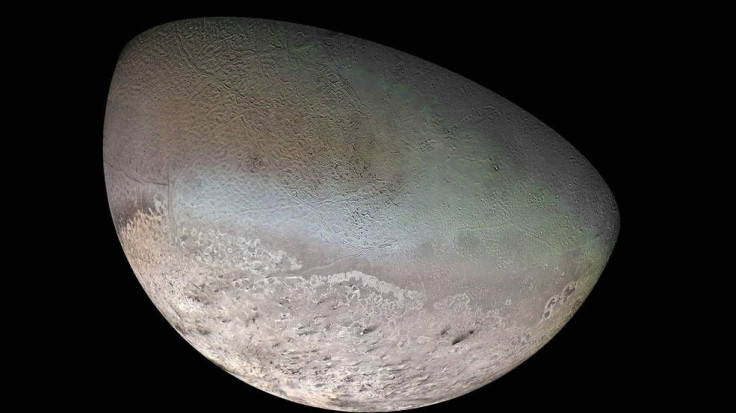NASA Proposes Mission To Explore Neptune’s Moon Triton

KEY POINTS
- A team at NASA proposed exploring Neptune's moon Triton through a new mission
- The Trident mission could serve as a follow-up to NASA's Voyager 2 expedition
- Trident aims to study the formation and evolution of Triton
A team at NASA has proposed a new mission to explore Triton, which is Neptune’s largest moon. The mission aims to uncover the various mysteries surrounding the natural satellite’s odd characteristics.
The mission, dubbed as Trident, was proposed as part of NASA’s Discovery Program. In 2021, this program will select two proposals that will become full-fledged NASA missions before the end of the decade.
If selected, Trident will become NASA’s first mission to explore Trident after Voyager 2, a space probe that flew close to the moon in 1989. During its flyby, the probe discovered various mysterious characteristics of the natural satellite, such as the icy materials spraying out of its surface.
Through a mission such as Trident, NASA will be able to learn how Neptune’s moon was able to develop an icy surface. Also, an in-depth analysis of the moon could reveal why Triton orbits in the opposite direction of Neptune’s rotation. So far, Triton is the only natural satellite in the Solar System that follows a reverse orbit.
The team behind Trident plans to study Triton by following in the footsteps of Voyager 2. The researchers aim to analyze the moon by taking high-quality images of it from orbit. Unlike Voyager 2, which was only able to observe 40% of the satellite’s surface, the Trident mission’s objective is to map out the entire moon.
For the researchers, studying the natural satellite’s surface and composition will provide valuable information regarding its formation and evolution.
“Triton is weird, but yet relevantly weird, because of the science we can do there,” Karl Mitchell, a member of the Trident team at NASA’s Jet Propulsion Laboratory, said in a statement. “We know the surface has all these features we've never seen before, which motivates us to want to know 'How does this world work?’”
“As we said to NASA in our mission proposal, Triton isn't just a key to solar system science — it's a whole keyring: a captured Kuiper Belt object that evolved, a potential ocean world with active plumes, an energetic ionosphere and a young, unique surface,” he added.
© Copyright IBTimes 2025. All rights reserved.





















